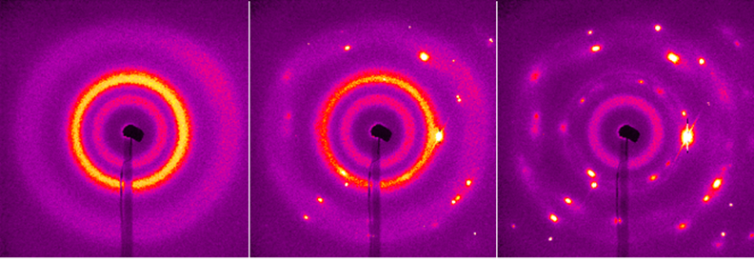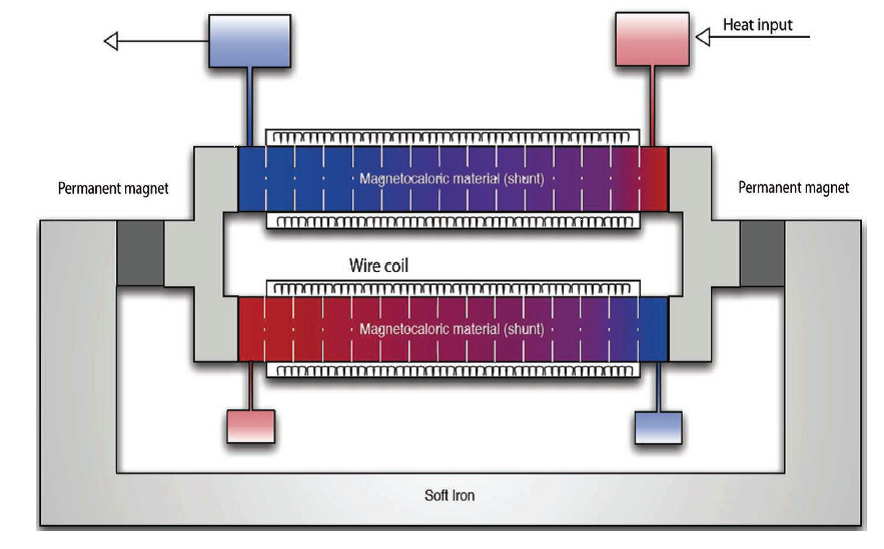Research
Self-healing materials
Like biological systems man-made can self repair damage. We investigate how in iron-based alloys creep damage is healed by site-selective precipitation at the free cavity surface. Illustrated is the healing of creep damage in Fe‑Au alloys.

Micro-beam X-ray diffraction
Using an intense micron/nano-sized beam of high-energy photons individual crystallites can be monitored in-situ during phase transformations in complex microstructures an devices. Illustrated is grain refinement during solidification of aluminum.

Small-angle neutron scattering
Small angle neutron scattering can provide insight into the evolution of the particle size distribution of precipitates during heat treatments from both chemical and magnetic phase differences. Illustrated is the magnetic scattering from copper precipitates in iron.

Magnetic cooling
In materials with a giant magneto-caloric effect near room temperature the removal of an applied magnetic field can cause a significant cooling effect. We investigate how to improve the performance of these materials. The enhanced effect was found to be linked to an electronic instability across the magnetic phase transition, as illustrated in charge density plots.

Magnetic energy conversion
Magnetic materials have the potential to transform heat into electricity with a higher efficiency than currently available. This open a window to harvest waste heat that is currently unused. We develop energy-efficient magnetic materials for energy conversion in magnetic motors and generators (see illustration).
